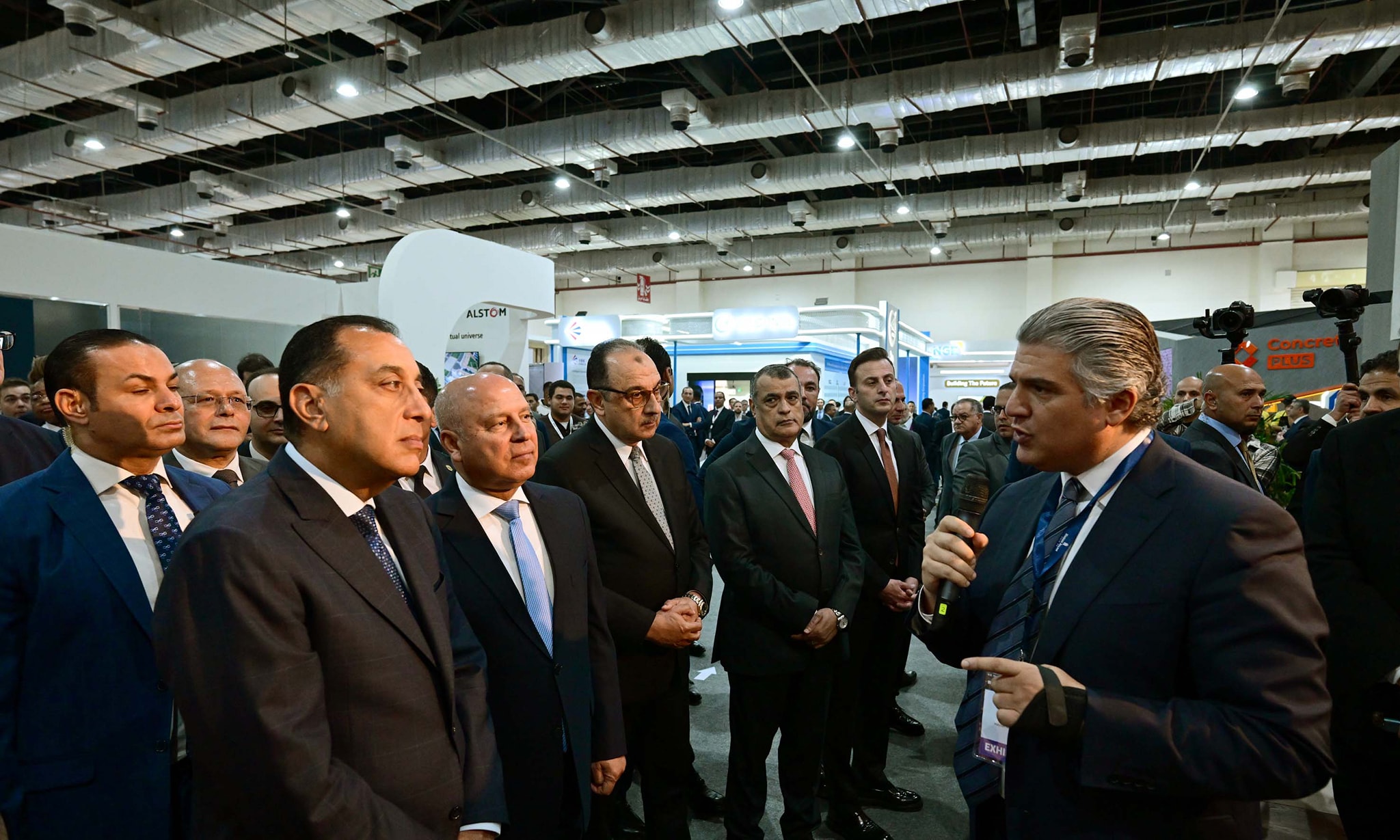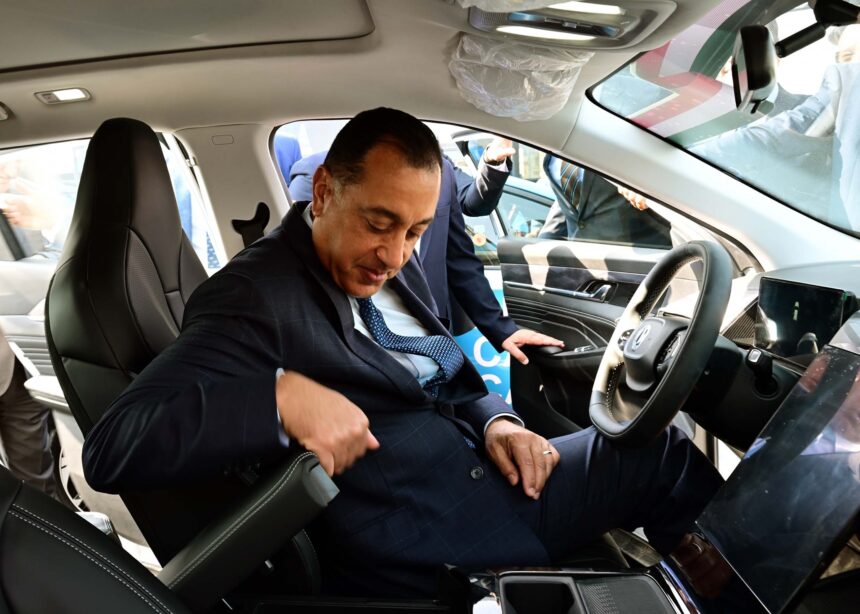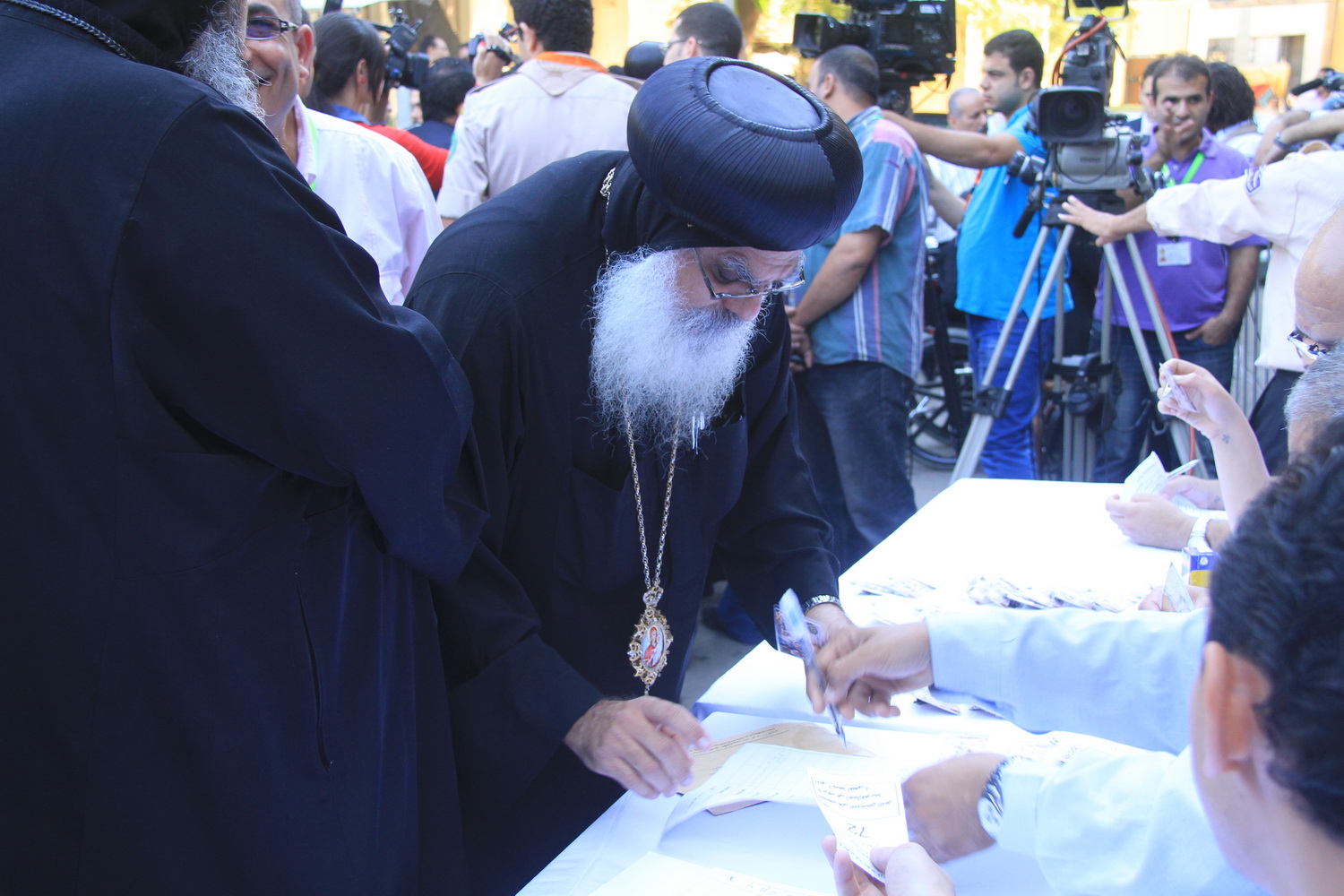During his visit to the TransMEA 2025 International Smart Transport Exhibition, Prime Minister Mostafa Madbouly inspected the Vilaro train on display and officially signaled the start of the pilot operation for the first phase of Egypt’s High-Speed Rail, connecting Ain Sokhna, Alamein, and Matrouh, specifically within the 6th of October area.
The Prime Minister observed the regional Desiro train operating along the initial line from October Gardens, passing key landmarks including the Water Bridge and Fayoum Bridge, reaching kilometer 143. This trial marks the launch of one of Egypt’s most ambitious transport infrastructure projects, a milestone in modernizing the country’s transport network.
Deputy Prime Minister for Industrial Development and Minister of Transport and Industry Kamel Al-Wazir stated that the network will integrate Egypt’s urban, industrial, agricultural, and tourist regions. The rail will link new cities such as 6th of October, New Minya, and New Assiut, as well as industrial zones in Helwan, 15 May, and Borg El Arab. It will also connect major tourist destinations including Giza, Luxor, Aswan, Abu Simbel, and the Red Sea, in addition to agricultural development areas like the New Delta, Toshka, West Minya, East Oweinat, and other “Future of Egypt” projects.
The high-speed network is expected to create thousands of direct and indirect jobs, connect industrial production zones to ports, integrate tourist destinations, link airports and highways, reduce environmental impact, and support sustainable urban development.
During the visit, the Prime Minister received briefings from the heads of the National Authority for Tunnels, Egyptian National Railways, and Alexandria Port Authority on ongoing projects, transport efficiency, tourism, industrial development, and Egypt’s growing regional and global industrial partnerships.
Madbouly also met with international exhibitors including Alstom, Siemens, and AVIC, alongside Egyptian firms such as Orascom and NERC, underscoring Egypt’s focus on localizing transport and industrial manufacturing while enhancing global cooperation and sustainable economic growth.

The Prime Minister inspected the first locally manufactured amphibious bus, designed to support tourism, and received briefings from Hassan El-Laithi, Chairperson of Super Jet, on buses produced by companies including El-Nasr, MCV Egypt, MAN Castor, and Volvo, intended for domestic use and export as part of Egypt’s industrial localization plan.
He toured a traffic education city aimed at teaching children road safety and inspected the first of 55 new Cairo Metro Line 1 trains, featuring high-capacity air conditioning, inter-carriage safety passages, CCTV monitoring, LCD information screens, accessible seating for passengers with disabilities, and LED maps for the hearing-impaired.
Madbouly also reviewed locally produced buses and vehicles by Akta, including Higer buses with 60% local components, Yutong buses with 50% local components, Dongfeng taxis, and GM4 electric vehicles operating in the New Administrative Capital, highlighting the expansion of domestic electric and hybrid public transport production.
The Prime Minister, alongside Minister Al-Wazir and Siemens CEO Ronald Busch, inspected Egypt’s first Vilaro high-speed electric train, part of the future national high-speed rail network. The eight-car, 200-meter-long train accommodates 479 seated passengers, with luxury, business, and standard-class cars featuring advanced monitoring systems, restaurant seating, accessible toilets, multiple screens, and emergency equipment to ensure safety, comfort, and efficiency.
The pilot operation of the high-speed rail underscores Egypt’s commitment to modernizing transport infrastructure, supporting tourism, enhancing commuter comfort, promoting industrial localization, generating employment, and advancing sustainable mobility.




